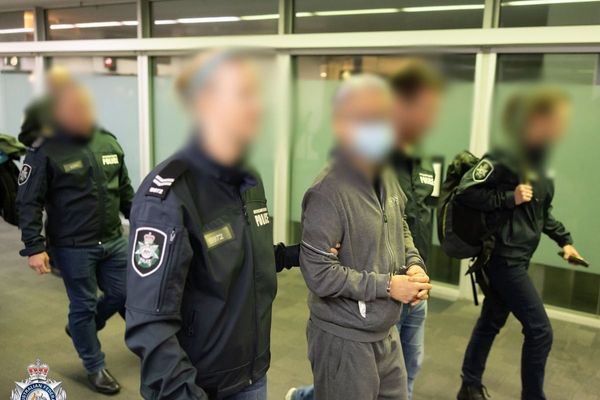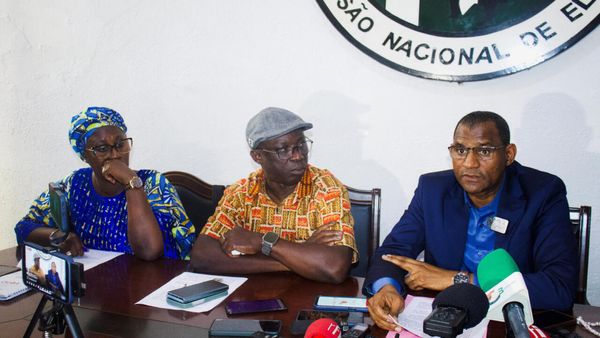
I took this photograph last year in northern Malawi. It’s part of a project for Norwegian Church Aid, an NGO that documents modern slavery in the mining industry. It’s very hard to believe your own eyes when you see what this actually looks like. These miners work in dangerous conditions with very little protective gear. Their salaries are awful and their contracts are unstable, not to mention the terrible health and environmental impacts of such polluting work. But mining is the only option available to the local people: they have no other choice.
I stayed in a tent nearby, waking up at 4am to begin the hour-long walk towards the pits. By the time we arrived, the miners had already been working for hours.
One person we visited had been paralysed and could no longer work, which meant he could no longer pay his bills. A few weeks after I left, another miner died. Accidents are becoming more frequent because the mines are collapsing. The working conditions there were among the worst I have ever seen.
My visit was just weeks before the Cop26 climate summit in Glasgow, where all the world leaders assembled to talk about facing up to the impact of coal on the environment. But while they talked, this was the reality on the ground. The damage of coal is not just the environmental impact of emissions when it is burned, it’s also how dangerous the production process is for those in the mines.
What struck me about this photograph were the contrasts. The beauty of the landscape offsets the cruelty of the scene. The greenery of the hills just stands to highlight the darkness of the coal. And the gentle morning light hitting this man, Zikani Musafili, illuminates his expression of deep sorrow staring straight at the viewer. I like the compositional quality of the outstretched hand – this chance moment really changes the image.
I always want my photographs to build a relationship between the subject and the viewer. I want to be close to people in difficult situations but in a dignified way, and allow others the chance of experiencing that closeness.
I take these photos to try to make a difference; to raise awareness of working conditions, to support people in any legal action they take, and to help them get compensation when something goes wrong. Perhaps it’s an old-fashioned view, but I think photographs should try and change things. You document the world and its ills so people can put an end to things that shouldn’t be happening.
I didn’t choose to become an NGO photographer. The local paper I worked for in Norway closed its Oslo office, leaving me without a job. I was forced to make a change, but it worked out really well for me. Being in a campaigning organisation rather than a newspaper, it feels as though the gap between taking a photograph and it making a difference is somehow smaller.
The decline of the newspaper industry concerns me. I was not the only one to lose my job. Nowadays, lots of the best work is done by freelancers working on specific projects and developing their own ideas, which they are then funded to pursue. The day-to-day work of photojournalism isn’t as strong as it was. But the best work being made now is better than ever: it just happens in different places and in different ways.
I’m more eager to make this work than I ever was. I have lost none of my hunger, and experience has given me skills I did not have when I started out. Experience is a good thing - sometimes it feels as if it isn’t valued highly enough. Employing young people is great, but there are things you learn over a long career that you can’t pick up straight off the bat.
I will never stop hating taking a bad photo. Pictures can help people in concrete ways. And when pictures can make a difference, they have to be good.

Håvard Bjelland’s CV
Born: Bergen, Norway 1966
Trained: Self-taught.
Influences: “Cartier Bresson, James Nachtwey and the photographers in my local newspaper when I was a paperboy.”
High point: “Publishing the book Give Me My Life Back in 2014; a documentary about Norwegian veterans with PTSD, together with Bjørn Asle Nord.”
Low point: “Losing my job at a newspaper. I remember taking pictures in the freezing northern part of Norway, making a story on the Norwegian fighter pilots that bombed Libya, when I got the phone call. But in the end it gave me a new opportunity.”
Top tip: “Just keep on working.”
• Håvard Bjelland is a finalist in the documentary category of the Sony World Photography awards. The competition’s exhibition is at Somerset House, London, 13 April to 2 May.







